God Save the Kouign

Because nobody else is going to save you any, that’s for sure. It’s just too sweet and buttery. Tender on the inside and crispy around the edges like a croissant, it has a crackly caramel top that adds just the right je-ne-sais-quois (I wrote that in French because I don’t know how to say it in Breton).
I’ll admit that this “simple butter cake” kicked my can this week. I went into it thinking I’d be able to do it blindfolded, since I consider lamination something of a specialty. Five days, two sacks of flour and $40 worth of butter later, my pride was in the ash can, along with sixteen awful kouigns. Say what you will about the recipe I finally settled on, it’s been tested!
Earlier in the week I wrote that I’d be leaving the sugar out of the folding process. However rolled-in sugar is one of the defining features of this bread. In the end I couldn’t leave it out. The kouign amann that resulted didn’t rise as high as the version without the rolled-in sugar, but the result is probably a lot closer to the real thing. Here’s how it goes. Combine your flour and yeast in a mixer fitted with a paddle and add the melted butter…

…and the water.

Stir until everything is moistened, then switch to the dough hook and knead for about a minute. The dough will be a bit shaggy, that’s OK. If it’s very shaggy and won’t hold together at all, add a bit more water. It will smooth out and become more elastic as it rises.
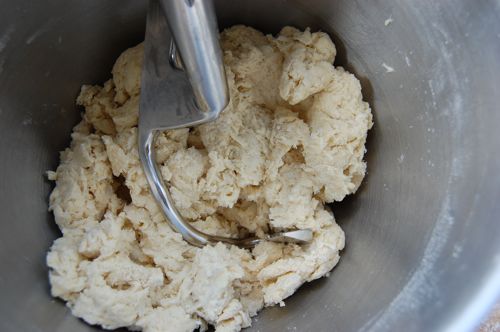
Press it together into a ball, put it into a large bowl and apply some oil or nonstick spray. Since this dough has lots of yeast and no salt, it’s going to take off like a rocket. Half an hour should be plenty of time for rising.

When the dough has about ten minutes to go, make your butter block according to the directions for laminating dough under the Techniques menu. Pastry Chef Laura suggested that working a couple tablespoons of flour would help absorb moisture and make the resulting pastry flakier. Why didn’t I think of that? Add it.
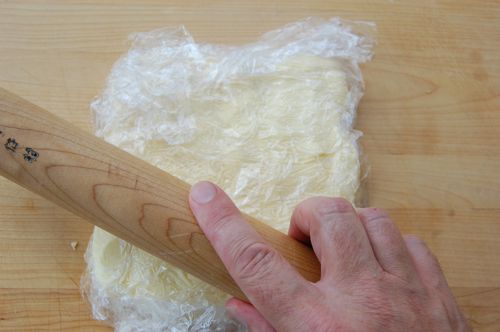
When the dough has risen and is nice and puffy, you’re ready to roll. Literally.
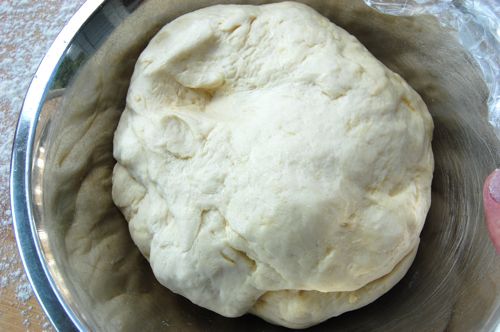
Lightly flour your board…

…and pat the dough into a square.
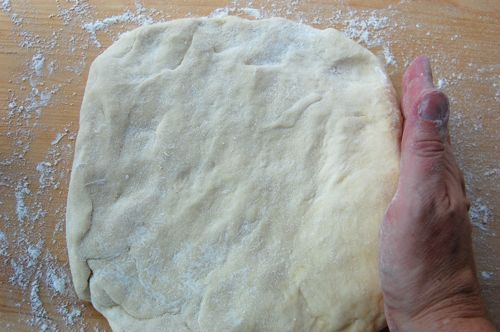
Apply your butter. My block isn’t perfect, but by this time I’d made kouign amann nine times. I was frustrated. Anyway, this is a rustic pastry, right? Oh, and I should mention that you want the best quality salted butter you can lay your hands on for this. As with every laminated dough, butter is the star, so don’t skimp if you can help it. Euro-style cultured butters will not only taste better for this, they’ll be drier, and that will give you a better result.
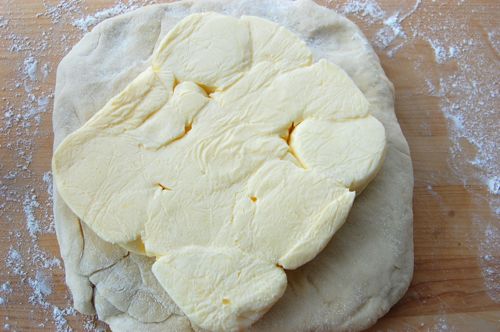
Make your butter envelope…

…roll it out…

…and letter fold it.
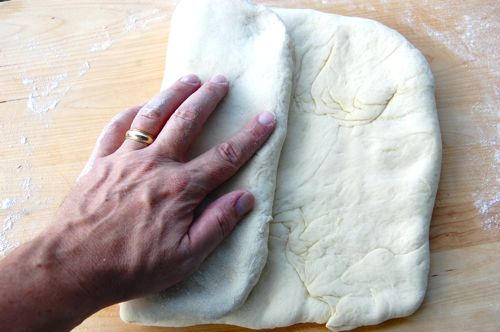
Lay it out on a lightly floured sheet pan (I forgot the flour here), cover it with plastic wrap and refrigerate it for 20 minutes. This is the first of your three “turns.”

After twenty minutes, do another “turn”, which is to say, repeat the rolling and letter fold and return the dough to the refrigerator for another twenty minutes. The dough will hold at this point, if you wish, for 2-3 days in the refrigerator and 2-3 months in the freezer, cut into pieces of course. If you don’t want this much dough you can cut the below recipe in half, even half again if you only want to make one pastry.
When you’re ready to make your pastries, do your final turn. This time you’re going to add sugar to the top of the dough before you fold it. Here I’m adding too much. What can I say, I got excited. I brushed about a third of it off.
But Joe, you said sugar is a no-no for laminated doughs! Yes, and it is if you allow the butter and sugar to come into direct contact. However if there’s a layer of dough in between, you don’t get the same reaction, provided you don’t allow the sugared dough to sit for very long (as in several hours).
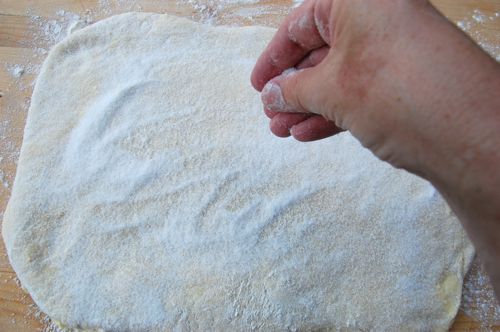
Fold the dough and put it back into the fridge.
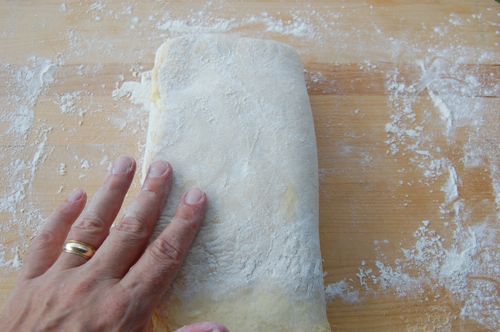
Prepare your pan. Line a cake layer pan with parchment.
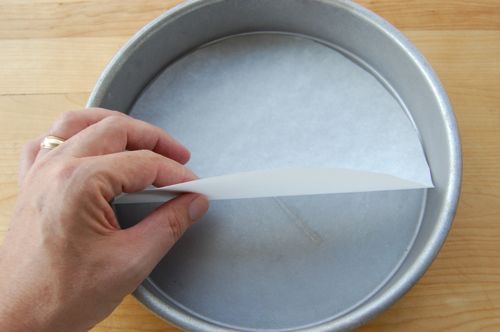
When you’re all set to roll, take the dough back out of the refrigerator and cut it into pieces (there’s enough dough here for four pastries, just under 16 ounces each). Turn one piece out onto your floured board and apply the pin.
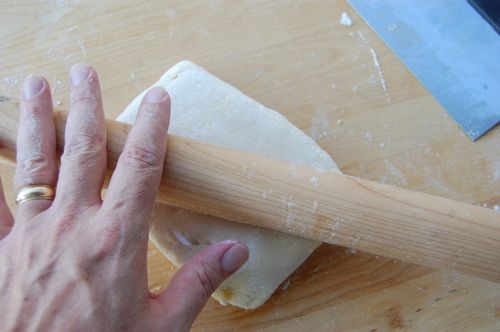
Roll it to a rough circle and place it in the pan. Let it rise for about 1 1/2 hours until puffy. Meanwhile, preheat your oven to 400.
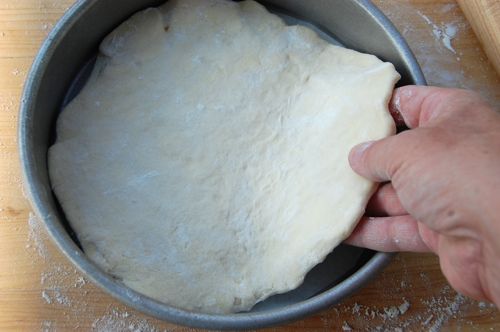
At that point, apply your egg wash…
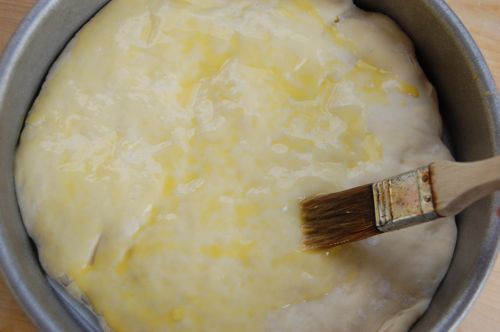
…and a generous amount of sugar. This is necessary to create crunchy caramel top.
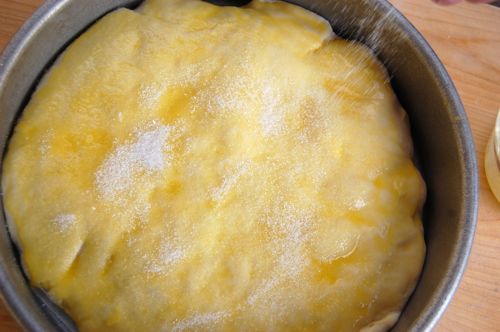
Bake until the bread has risen nicely and the top is a deep brown. Say, that’s not a particularly appealing picture.
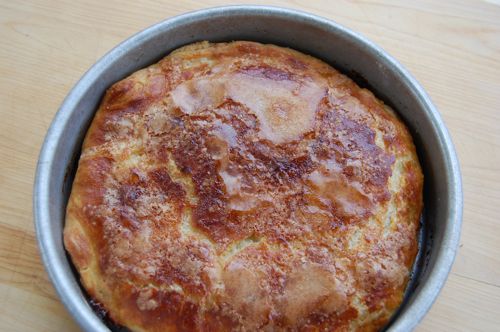
Oh yeah, that’s what I’m talkin’ bout.
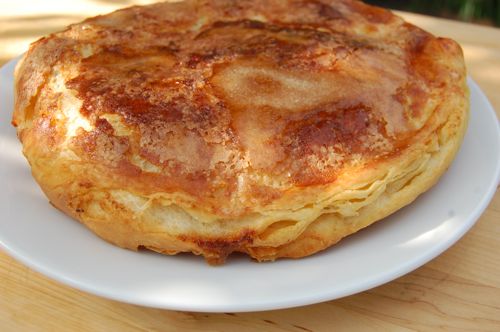
Eat it warm. With wine or spirits it’s especially good, and trust me, I needed that after the week I had.
UPDATE: Reader Evan D. adds:
I wanted to mention that Kouign Amman can be made from scrap croissant dough, and that this is how a lot of bakeries do it. An extra turn or two with superfine granulated sugar is all it takes. A little jam in the center really ties it all together.
UPDATE AGAIN: Reader Asthe adds:
“I do not know”” in Breton that should be: n’ouzon ket (ne.. ket is the negative form, and ouzon must be “to know” ) and you can say “i’m sorry, i don’t know”: pec’hed eo, n’ouzon ket ! (pronouce: “c’h” as “RRR”)
Ain’t the web wonderful?
I just stumbled upon your site and am so excited with the quality of your article! I can’t wait to read everything you’ve posted! I’ll be baaaaacckk!!!!! New information is so refreshing…..
Come back often, Andrea! Thanks for stopping by!
– Joe
Hi Joe,
I think this is the weekend I will finally attempt some lamination and I’ve been salivating over your photo of the kouign amann for years now. I just wanted to check the sugar quantity. The recipe calls for 1 cup for sprinkling, but I’m not clear how much should go inside and how much on top. Also, is that 1 cup of sugar for all four kouign amanns (or whatever the plural is!) that the recipe makes, i.e. just 4 tbsp each? If so, I guess it’s not a very sweet pastry at all?
Thanks as always!
Hi Jen!
Sorry if this is late. Your supposition was correct…it’s about 1/4 sugar for each of them.
How did they turn out?
– Joe
Hi Joe, thanks for the reply! I did a half-batch (with a little bit more sugar, but probably not too far off). They turned out pretty well, and as my first attempt at lamination, I’m reasonably satisfied! The layers were clearly visible, but were much softer than the way your photo looks. I suspect it’s because, despite your warnings about the effect of the sugar, I decided to do the final proof after the last turn in the fridge overnight (what can I say, I have a bad habit of starting yeast recipes at 11 PM 🙂 ). Strangely, it barely puffed at all in the fridge and even after I left it a good 45 minutes the next morning, it still didn’t seem to get anywhere near as puffy as yours in the photo. Getting a bit desperate since time was ticking, I baked them up anyway. One puffed enormously in the oven and the other less so. They looked the appropriate shade of brown at 15 mins, but I thought I should leave them the extra 5 (even knowing that my oven runs hot – stupid, stupid), and ended up with rather unappetizing-looking tops and shatteringly crisp sides. Nonetheless, they were delicious if not quite how they should have been. I took them to class, and they were eagerly devoured! I happily shared my source, so you may have some new visitors to joepastry.com soon 🙂
I do have 2 questions though:
– As I said, I baked them probably 5 mins too long, at least as far as the tops went. What surprised me is that in that time, they actually deflated quite a bit in the oven. The end result was a far thinner “cake” than yours. I’m used to things deflating after they come out and cool down of course, but can you think why it would have happened while still in the oven? Could it have been related to overbaking or is there another explanation?
– When I made the envelope and pounded out the dough, for the life of me I couldn’t get the butter any closer than maybe 1 or 1.5″ from the edge. Following the puff pastry lamination tutorial, I trimmed the edges (losing a lot of dough as a result), but it occurred to me that since this dough was much thicker and stretchier than the puff dough would be, maybe it was normal to have a wider border? Was I right to trim, or should I have left it?
Hey Jen!
Yes it was that overnight in the fridge with the sugar that caused many of the problems. The wetness is a result of syrup that was formed when the sugar absorbed moisture from the surrounding dough. That would have undermined the structure as well, causing the collapse you described. So, next time try adding sugar, proofing and baking right away. That’ll solve a lot of those problems.
Regarding the rolling, it’s just a matter of practice. Some trimming was probably warranted, but as you practice you’ll get better at pushing the butter out to the edge. Sometimes you can do a little manual stretching and tucking to lessen the border. In any case don’t worry about it too much. Everyone has a little of that in any laminating project!
Cheers,
– Joe
Hi Joe, I just made my second batch of kouign-amann and the result was phenomenal!! I was so pleased, as were my houseguests! I posted some photos at https://www.facebook.com/media/set/?set=a.10201305699865377.1073741826.1259105065&type=1&l=d365a38b6b. I didn’t leave them to get as golden as yours as I was nervous about burning the sugar again, but maybe next time 🙂
Thanks again, and enjoy your vacation!
They look great! Congratulations, Jen!
And I shall. More soon!
– Joe
Every so often I come across a mention of kouign amann in the food blogs I read, which reminds me of this post. Sometimes I see pictures of the interior of a kouign amann made by a high quality bakery, which reminds me that your version looks better than anything I’ve seen made in the states. And this reminds me that you and your blog are awesome. See: Kouign amann from Dominique Ansel’s bakery in New York City
Thanks!
Hey Joe, can i use a danish dough for this? I have one sitting in the freezer here? And since the lamination of thd dough doesn’t need to be perfect is it theoreticaly possible to make this with failed croissant doughs?
Hey Nate! I’d suggest trying them both and seeing how you like it, since they both can work. Failed croissant dough is probably closer to the original intent. Danish dough will be more on the flaky side, but heck if you’ve got it, use it. From what I understand kouign amann is frequently made from scrap dough anyway. Adding a little sugar and rolling it in a different shape is a creative way to dress it up!
Cheers and let me know what you think!
– Joe
I’m glad you persisted! I tried to make Kouign Aman a few years ago, and I didn’t know about keeping the sugar and butter away from each other and it made a weepy mess. I baked it anyway, and there was a lot of burnt caramel. The less blackened chunks I hacked out of it were close to delicious, just they still had some burnt flavour. It was, however, enough of a mess (probably less than half was edible,) that I never tried it again. I think with your advice I might be itching to do it again!
I’ve been down that road, Jen, believe me. I made kouign amann more times that anything else on the blog, except perhaps for canelés. It was one of the more traumatic experiences of my baking life, especially because at that time there were few if any published recipes that included the right technique. Uhhhhh…I still get the shivers thinking about it. Anyway, using the correct method it’s actually pretty easy and delicious. Do try it and get back with me!
Cheers and welcome to the site!
– Joe